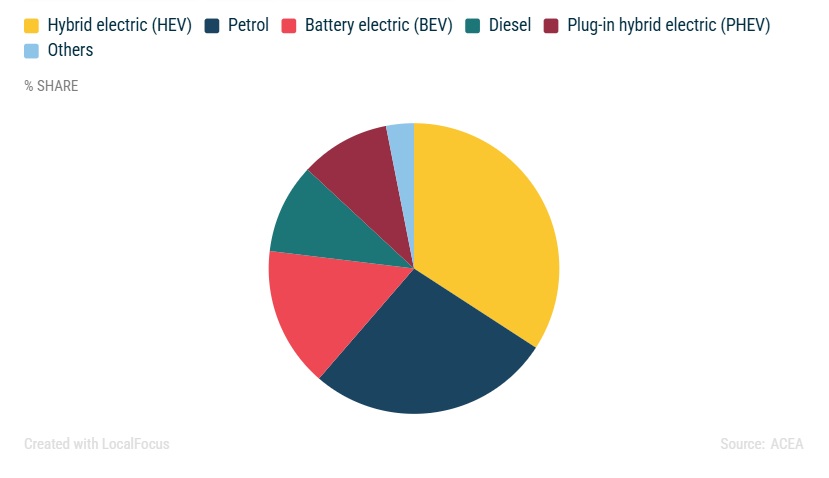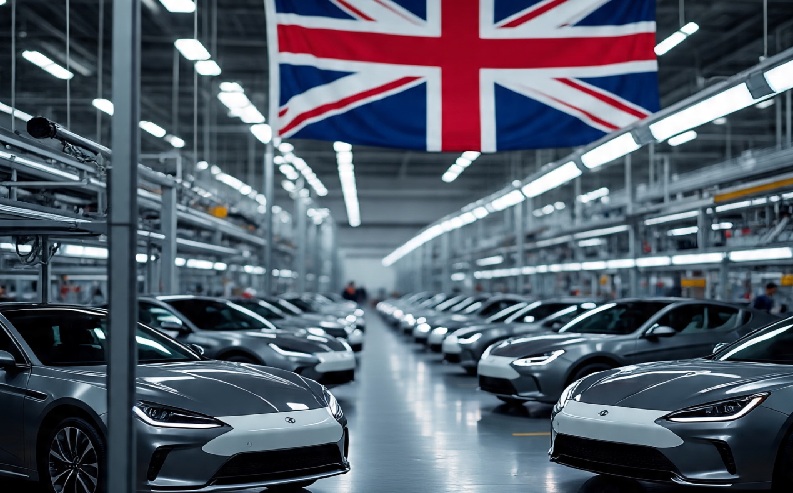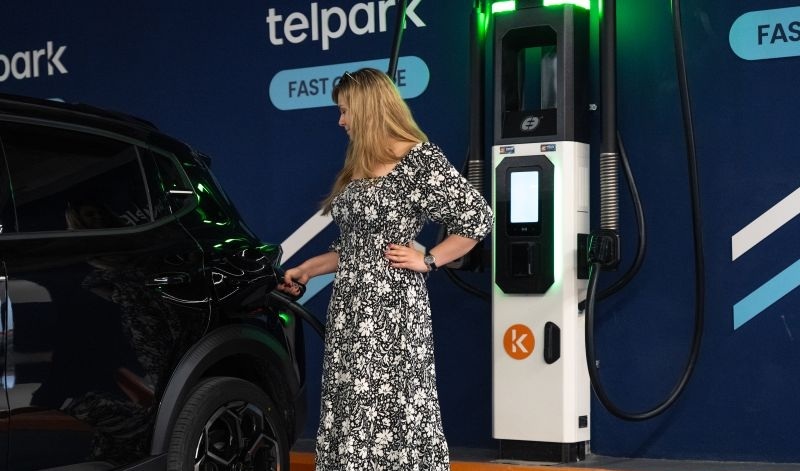Accumulated car registrations in the European Union (EU) up to the month of July fell by 0.7% compared to the same period last year, reaching a total of 6.49 million units, according to data released by the European Automobile Manufacturers’ Association (ACEA).
However, in contrast, during the month of July alone, registrations saw a sharp increase of 7.4%, making it the month with the highest growth in deliveries, with a total of 914,680 registrations — the fourth-highest month of the year in terms of volume.
The industry body points out that registration volumes remain relatively low and that the slight drop in cumulative figures for the year is due to the “challenging global economic environment for car manufacturers”, where tariff issues with the United States and the ongoing transition towards more sustainable models are impacting sales.
BATTERY ELECTRIC VEHICLES HOLD STEADY WITH 15.6% MARKET SHARE
Another key figure highlighted by ACEA is that battery electric vehicles (BEVs) maintained a 15.6% market share within the EU — the same level seen at the end of the first half of the year.
Up to July, new electric car sales totalled 1,011,903 units, with 142,632 of those registered in July.
Three of the EU’s four largest markets, which together account for more than 60% of electric vehicle registrations, saw increases: Germany (+38.4%), Belgium (+17.6%), and the Netherlands (+6.5%).
This contrasted with France, where registrations declined by 4.3%, despite a positive year-on-year increase of 14.8% in July 2025.
Meanwhile, plug-in hybrid vehicle (PHEV) registrations reached 561,190 units (91,780 in July alone), accounting for 8.6% of total sales — an increase compared to their 6.9% share in the first seven months of 2024.
This growth was driven by rising volumes in key markets such as Spain (+94.5%), Germany (+59.2%), and Italy (+60.3%).
Hybrid electric vehicle (HEV) registrations rose to 2,255,080 units (312,318 in July alone), fuelled by growth in the four major markets: France (+30.5%), Spain (+30.2%), Italy (+9.4%) and Germany (+10.7%).
These figures once again confirm that this type of powertrain remains the most popular across Europe, holding a 34.7% market share and marking a year-on-year increase of 5.1%.
Year-on-year variation in July 2025 showed an increase of 39.1% for battery electric vehicles, 14.3% for hybrid electric vehicles, while plug-in hybrids recorded their fifth consecutive month of strong and sustained growth, with an increase of 56.9%.
COMBUSTION VEHICLES CONTINUE TO LOSE GROUND
Between January and July 2025, internal combustion engine (ICE) vehicles continued to lose ground to more electrified options, although they still maintain a significant presence in the market.
By the end of July 2025, petrol car registrations had fallen by 20.1%, with declines recorded across all major markets. France saw the steepest drop in Europe, with a 33.6% plunge, followed by Germany (-25.9%), Italy (-17.8%), and Spain (-12.6%). With 1,834,375 new petrol cars registered so far, their market share shrank from 35.1% to 28.3%.
The diesel car market experienced a similar trend. Registrations up to July fell by 26.4%, leaving diesel vehicles with a 9.5% market share as of July 2025, with 616,665 vehicles registered in this category.
As a result, the combined market share of petrol and diesel combustion cars dropped to 37.8% in the EU automotive market, compared to 47.9% in July of the previous year.
READ MORE
-
UK updates eligibility criteria for the Electric Car Grant
The UK Government sets new technical and environmental requirements that manufacturers must meet for their electric vehicles to qualify for grants of up to £3,750.
-
Deftpower raises €12.5M to boost European growth and enhance its AI-powered charging tech
Deftpower aims to make EV charging cheaper, cleaner, and smarter for drivers and CPOs, while easing pressure on Europe’s congested power grids.
-
Ekoenergetyka: Investing in EV charging at car parks is more crucial now than ever before
Public car parks are no longer just simple transit points. With the addition of chargers, they are becoming strategic hubs for electric mobility. What is Ekoenergetyka’s strategy?










